| DECANTATION PROCEDURE |
Material Required for Decantation:
- wide-mouth glass jars with lids
- plastic centrifuge tubes with caps
- centrifuge tube rack
- measuring tape or ruler
- marking pen
- labeling tape
- dispersant (sodium hexametaphosphate)
- spatula
- squeeze bottle with distilled water
- ultra-sonic probe
- lab tissues
- thermometer
- timer
- plastic syringe
|
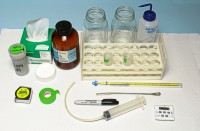 |
| Label the jars with 0 and 5-cm depths. Sample identifiers should be labeled on the jars and centrifuge tubes with labeling tape for easy removal later. |
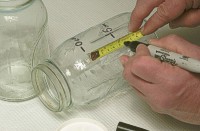 |
| Add the suspension to be separated to the jar, fill each jar up to the 0-cm water-depth line with distilled water, and add a small amount of dispersant with the spatula (Note: the amount of dispersant should not exceed 0.5% of the suspension by weight). Seal the jar, and shake vigorously to homogenize the suspension. |
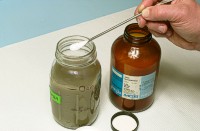 |
| Disperse the sample with the sonic probe for 15-20 seconds. Rinse off the tip of the probe with distilled water and dry between samples. |
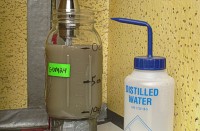 |
| Start the timer and check the temperature of the suspension to determine the settling time. If more than one sample is to be separated, record the start and calculated withdrawal times for each sample. |
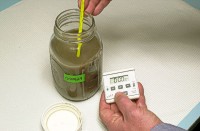 |
| After the appropriate time has elapsed (e.g. 4 hours, 6 minutes at 20 C) and the silt has settled past the 5-cm mark, use the syringe to withdraw the clay suspension from the interval above this depth and inject it into the centrifuge tube for storage until mounting as an oriented aggregate (any convenient container will suffice). Repeat withdrawals until adequate amount of clay has been isolated, or, if a complete separation is necessary, use larger containers as receptacles for the clay fraction and repeat the analysis until the supernatant liquid is clear after settling. Remember to rinse out the syringe with distilled water between withdrawals to prevent cross-sample contamination. |
 |
